The Shield of Compliance: Boosting Site Safety with Regulations
Enhance site safety with construction safety regulations. Discover compliance tips and global standards for your projects.
George Eleter
12/13/20246 min read


Construction Safety Rules Snapshot
Keeping workers safe and projects on track boils down to following the rules set in stone for construction safety. Let's break it down, focusing on the big guns in charge and the programs that lend a helping hand.
Construction's Top Safety Enforcers
When it comes to enforcing safety on construction sites, a few heavy-hitters stand out:
Occupational Safety and Health Administration (OSHA): Think of OSHA as the boss of workplace safety. They're all about creating rules, standards, and digging into hazards. OSHA's Construction Standards and handy Safety and Health Information Bulletins (SHIBs) provide the roadmap for safe practices (OSHA Construction Standards).
State Plans: Each state has the freedom to run its show on safety rules—these need to match or even beat OSHA's standards. They can get strict about safety, but don’t always hit state and local government employers in the wallet with penalties.
Programs to Keep You on the Straight and Narrow
To help employers follow these strict rules and keep sites safe, there are programs designed to guide and educate. Here’s what’s out there:
OSHA's On-Site Consultation Program: These folks are like your friendly neighborhood safety advisors. They pop in to give free tips and tricks to small and medium-sized businesses on avoiding hazards and getting up to speed with OSHA's rules. They also help put strong safety systems in place (OSHA Compliance Assistance).
Compliance Assistance Specialists (CAS): These are OSHA’s secret weapons stationed all over the country. They dish out advice tailored to your workplace on spotting, evaluating, and taming workplace dangers (OSHA CAS).
State-Specific Help: States dish out custom-fit programs catering to regional challenges and risks. These offerings are golden for handling local issues and sticking to specific state safety rules.
Construction bosses and contractors should grab these resources to boost safety on sites, dodge risks, and tick off regulatory boxes. Links for more on construction safety audits and construction site safety tips are just a click away.
Knowing the rulebook on construction safety and using the help available is key to running a safe and smooth operation. Check out our articles about construction management software that can be your ally in navigating safety and compliance with ease.
Building Occupancy Classifications
Building occupancy classifications are a big deal in construction. They affect lots of things, like how a project starts, how much it costs, and how long it takes.
Impact on Project Development
These classifications are a must-know for anyone involved in a building project. They affect zoning rules, building codes, and how things are designed (Procore). They make sure buildings are safe and accessible and work well for what they're supposed to do.
Types of Buildings and Materials
Fire Resistance Ratings: Building rules often judge buildings and materials by how well they can handle fire. These ratings talk about how long a building can take the heat and are set out in the National Fire Protection Association's Building Construction and Safety Code.
Specialized Projects:
Industrial Projects: These cover places like factories and power plants that have tough environmental rules and need special engineering and materials.
Civil and Infrastructure Projects: This kind of heavy construction is super technical and needs complicated designs. The planning stages for these projects can go on for years.
Influence on Cost and Timeline
Building occupancy classifications make a big difference in how much a project costs and how long it takes. How tricky a project is and how long it drags out depend a lot on these classifications.
Cost Implications
Regulatory Requirements: The requirements can be all over the place depending on the classification. For example, commercial buildings might need fire safety systems, accessibility features, and structural designs that residential buildings don't.
Material and Labor Costs: Industrial and civil projects need special materials and expert workers, which can push up costs. Check out this chart for a comparison:
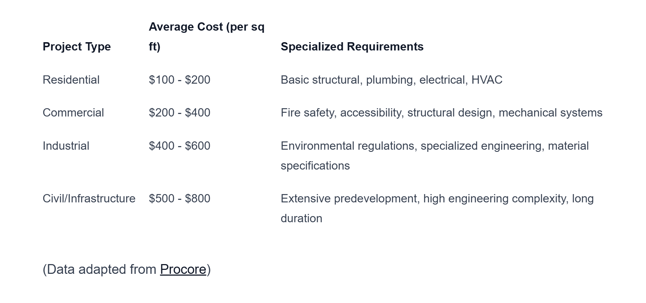

Timeline Implications
Predevelopment Phases:
Industrial and civil projects typically need long planning and preconstruction phases, adding a lot of time to the entire project.
Permits and Codes:
Residential construction usually requires permits for structure, plumbing, electrical, insulation, and HVAC systems.
Commercial projects need permits focusing on fire safety, accessibility, structural design, and mechanical systems. This can stretch out timelines due to extra eyes looking at everything (Next Insurance).
Grasping building occupancy classifications is key to planning a construction project that actually works. For more info on safety protocols and rules, check out construction safety guidelines and construction safety audits.
Contractor License Requirements
Getting your head around contractor license requirements is the ABCs of avoiding a run-in with the building police, aka construction safety laws. Depending on the project, you might need different licenses, have to jump through more hoops, and get cozy with building codes that only seem to grow more complicated.
Residential vs. Commercial Projects
Would you believe it? Not all licenses are created equal. Residential and commercial projects play by different rules. A builder for homes usually needs just the basic license covering plain ol' building stuff. But if you're thinking bigger—like office towers or a mall—you're in for deeper waters, needing a license with bells, whistles, and probably a few more tests and courses to get you up to snuff.
License Requirement - Residential Projects - Commercial Projects.
Basic Contractor's License: Yep, you need this - You bet!
Specialized License: Meh, not usually - Absolutely.
Additional Exams and Training: Just a handful - Pack a lunch—it’s a long day
Regulatory Distinctions:
Residential Projects: Here, you're looking at the fun stuff like plumbing that doesn't leak, sturdy walls, electric stuff that doesn’t zap you, and all the cozy bits like heating and cooling because nobody likes freezing in winter or roasting in summer.
Commercial Projects: Kiddie pool’s closed; you gotta know fire exits, accessibility for all walks of life, and how to shuffle a great big crowd safely through the doors on a bustling Monday morning.
Find out how you can keep all these ducks in a row with some handy construction management software solutions.
Regulatory Scrutiny and Building Codes
Prepare for the magnifying glass treatment: residential versus commercial construction is a whole different ball game when it comes to building codes.
Key Points of Scrutiny:
Residential Building Codes:
They're all about making sure the structure stays standing, the wires aren’t frayed, water flows right, and your home feels just right in summer or winter.
Don't forget about the neighborly concerns like keeping sounds down and not blocking that gorgeous skyline view (Next Insurance).
Commercial Building Codes:
Fires, doors, and accessibility are the name of the game here. Plus, keeping sticky fingers at bay with some serious security gadgetry—think fences, cameras, and a security dude or two.
Design Considerations:
Aspect - Residential Construction - Commercial Construction.
Noise Levels: Play nice with the neighbors - Easier to control.
Construction Traffic: Deal with it locally - More folks, more fuss.
Security: Keep it simple - Think A-list protection.
Customization: Let your style shine - More like a strict school teacher—limited wiggle room.
Home builders can let their imaginations rum wild, reflecting personal flair. Commercial sites are more about ticking boxes and keeping the penny-pinchers satisfied.
Safety is king… queen, emperor—all of it. With tough construction site safety measures, we've managed to make sites safer over the years. Stay on it if you're in the game of building stuff (Lumber Fi).
Want to be in-the-know on safety standards and what's trending? Check out our guides on construction safety audits and loads of other regs to keep you on the straight and narrow.
International Comparison of Safety Standards
Construction Safety Practices Worldwide
Safety measures in construction differ everywhere, driven by local rules, how they're enforced, and how much folks care about keeping workers safe. Knowing these differences is like knowing a secret handshake for project managers, investors, and architects when they're dealing with projects across borders or trying to find the top ways to keep workers out of harm's way.
Notable Country Rankings
Some nations really shine when it comes to keeping their construction scenes safe. Thanks to tough rules, regular check-ups, and fresh safety ideas, they don’t just talk the talk; they walk the walk with low accident rates and happy workers.
Country - Incident Rate (%) - Key Safety Measures.
Poland 4% Tough rules, low serious accident rate (Building Radar)
Singapore 5% Solid safety rules, good paychecks, frequent checks
United Kingdom - All-around health and safety rules, strict enforcement
Belgium - Strong rules, strict safety protocols
Switzerland - Top wages for workers, detailed safety measures
Poland is the poster child for safety with just 4% of incidents happening on its sites (Building Radar). Singapore doesn't lag far behind, keeping things safe with a 5% incident rate by sticking to solid safety laws and checking up on things regularly. Over in the UK, the story is all about strong health and safety rules, making it one of the big players in keeping construction sites safe.
Belgium doesn't slack either, following rules to the letter and boasting an effective safety setup. Then there's Switzerland, which, while it doesn’t top the chart for the lowest incident rate, throws down the highest average salary for its construction crew, backed up by detailed safety networks.
Getting a grip on these global safety secrets can seriously pump up how projects are planned and managed, leading to safer construction zones and tighter alignment with construction safety guidelines.
161 Parramatta Rd Annandale NSW 2038
Call Us on: 0414 738 827


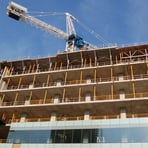
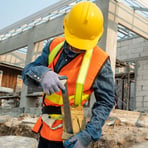
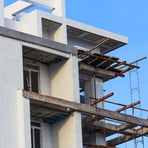
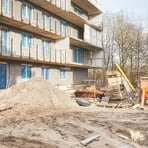
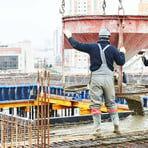
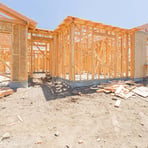
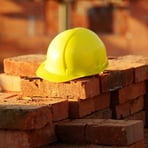
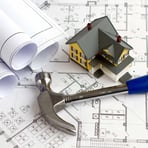
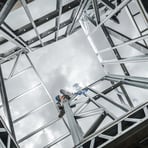
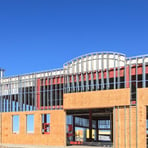
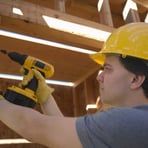

All Rights Reserved © Eleter Projects 2024
